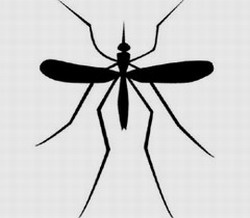Submitted by Silvia Ribeiro on

* Silvia Ribeiro
The data on which is based the declaration of international emergency for the Zika virus are striking. Not for the risks that spread of this virus would mean, but for the lack of evidence to motivate such a pompous statement by the World Health Organization (WHO) in the face of a mild illness, with very little evidence of connection with more serious ailments and without scientific proof. To make up for these lacks, it adds that as the disease's vector—the mosquito Aedes aegypti—is also a vector of dengue and chikungunya, it is attacking all three.
This alarmist context, focusing on unique aspects—"attack" the vector, isolated from its causes—favors narrow, erroneous and even dangerous approaches. For example, the company Oxitec, which has done controversial experiments with transgenic mosquitoes, now promotes them as a "solution" (in reality, as a business) in the face of the spread of the Zika virus, obviously without mentioning the risks involved and that transgenic mosquitoes could even make the situation worse.
Oxitec has now conducted experiments with releasing genetically modified [GM] mosquitoes in the Cayman Islands, Malaysia, Panama and Brazil. The company tried to do it in Europe, but the EU didn't permit it for reasons of biosecurity and inadequate [environmental] impact studies. Oxitec found "flexible" regulations in Brazil, where the company has experimented in the Northeast, although it couldn't get authorization from ANVISA, Brazil's health authority. Its technique is to produce GM Aedes aegypti manipulated with a conditional lethal gene, which is not expressed when the antibiotic tetracycline is applied during breeding. Then they release them [GM mosquitoes] to breed with wild mosquitoes that would produce sterile offspring if don't encounter the antibiotic [tetracycline].
Oxitec reports a reduction of 80-90 percent of the mosquito population in experimental areas. But according to documented reports by Edward Hammond, Third World Network, and GeneWatch, the reality is very different.
In a 2015 report, GeneWatch explains that mosquito abatement is unproven, because wild mosquitoes can simply have moved to surrounding areas. The Cayman Islands results suggest that the technique is very inefficient, because they used 2.8 million mosquitoes weekly to fight a wild population of 20,000 mosquitoes. In any event, although they reported a decrease in the release area, the mosquito population in neighboring areas showed an increase. Moreover, although it might temporarily lower the number of mosquitoes, there is no evidence anywhere in the world that GM mosquitoes have reduced the incidence of dengue or other diseases.
To the contrary, one of the concerns about the impacts of GM mosquitoes, particularly in endemic areas, is that the temporary decline, might lower the cross-resistance to various dengue serotypes present in these populations, promoting the advance of more aggressive forms such as hemorrhagic dengue. In addition, the displacement of Aedes aegypti can favor the expansion of rival transmitters; in the case of dengue, of Aedes albopictus, which is more difficult to eradicate.
GeneWatch also identifies that Oxitec has not provided evidence that the protein that expresses GM mosquitoes, called tTA, might not have allergenic or toxic effects in animals or humans, despite the fact that its toxicity and neurotoxicity has already been observed in mice.
In 2015 Oxitec was bought by Intrexon, a U.S. synthetic biology company, which suggests it could be considering the much riskier use of synthetic biology technologies with mosquitoes, such as the use of gene drives that could change an entire mosquito population in one or two generations. The consequences of changing an entire species would have unforeseeable implications, including potentially serious impacts on the ecosystem and mutations in disease agents. Experiments confined to modifying insects with this technique are already being conducted in U.S. universities, which prompted a warning from scientists about the high risks of this technology, including its potential use as a biological weapon ("A power for good or evil: The technology of 'gene drives' holds immense potential for improving our life on this planet – and also great dangers", The Independent, 08/02/15). However, in the wake of the Zika "emergency", propaganda and pressures to use this technology are growing.
Technofixes are narrow, conceived more as business than for truly confronting problems. In addition to the impacts they entail, they diverted consideration of the [underlying] causes and delay genuine attention.
According to official data up to February 2, 2016, 404 cases of microcephaly have been confirmed in Brazil. Only 17 had the Zika virus. It's barely 4.2 percent of confirmed cases, and it only shows that the virus was present, not that it was the cause of the microcephaly—an anomaly that has a broad range of possible causes, including exposure to poisons during pregnancy, malnutrition and other infections, all factors of high incidence among the poor in the Northeast, where 98 percent of the referred cases were reported.
The Brazilian Association of Collective Health published an excellent white paper and open letter to the public, (in Spanish) pointing out that the increase of microcephaly may be due to the use of insecticides and larvicides placed in drinking water (!), whose concentration rose in the Northeast during the period in question, due to water rationing for droughts unexpectedly more intense than normal. The Association demands a comprehensive consideration of the causes of the microcephaly and a resolute strategy for people with this condition. Unlike high-risk technical approaches, this is the only effective way of dealing with epidemics.
Translated from Spanish by Jane Brundage in Voices for Mother Earth Blog.
Original written in Spanish by Silvia Ribeiro and published in La Jornada, Mexico, February 6, 2016.
